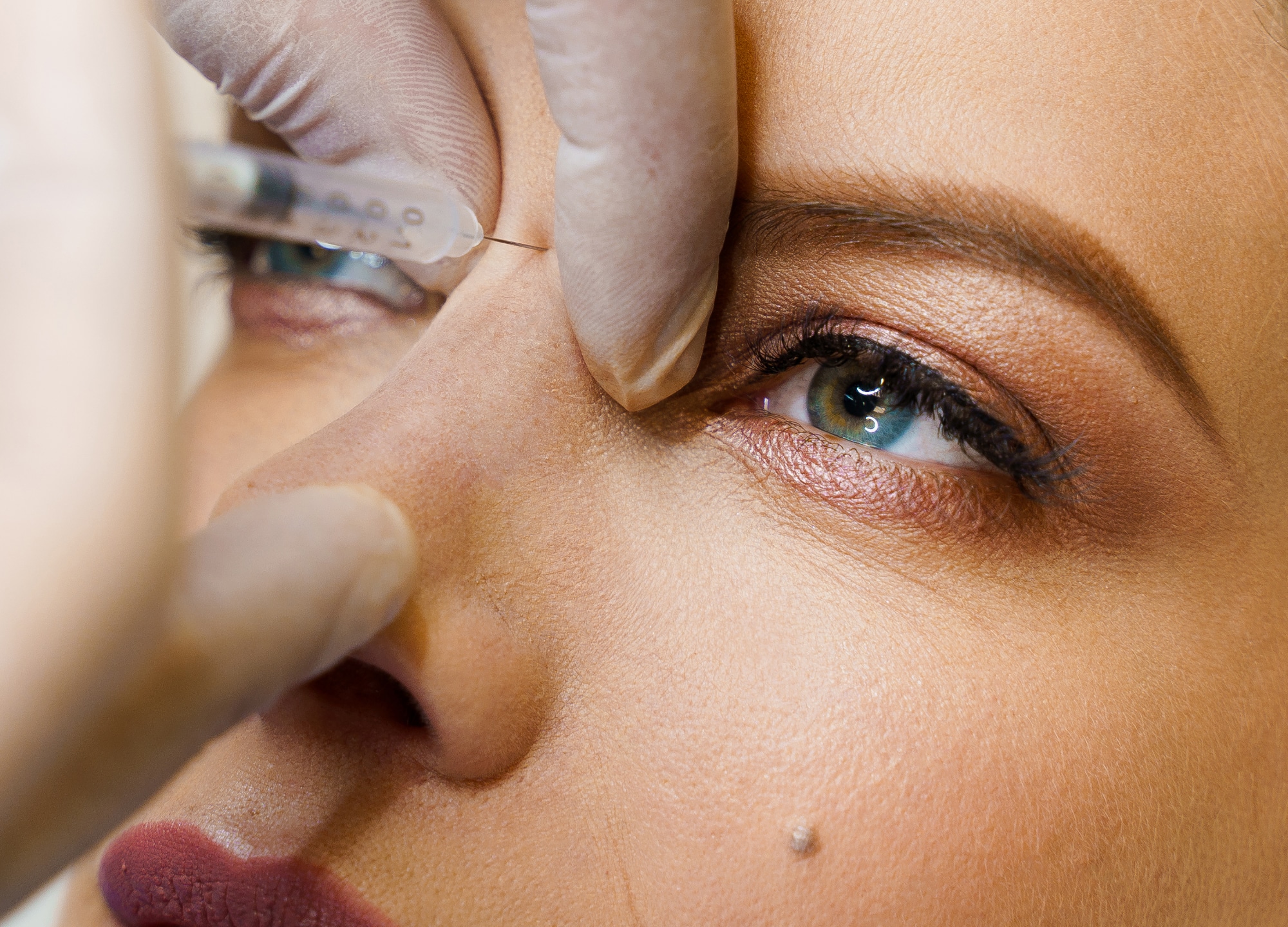Fillers offer something that almost no other minimally invasive cosmetic procedure, injectable or otherwise, can: instant gratification. Both patient and provider can see the results right away, in real time—something that even the beloved Botox can’t provide. Not to mention that fillers can do so much more than fill. Doctors can utilize different types of fillers, amounts, and injection locations to achieve a variety of different desired end results, notes Dr. Carlos Wolf, a double board-certified facial plastic surgeon in Miami.
Most of the time, the potential side effects from injectable fillers are minimal and temporary, with swelling and bruising being the most common. However, fillers do come with some very real risks. Vascular occlusion, caused when the filler is inadvertently injected into a vessel or compresses it, can happen anywhere on the face, points out New York City board-certified dermatologist Dr. Jeremy Brauer. This can result in anything from tissue death (aka necrosis) to irreversible blindness or stroke. Granted, these complications are rare; research has put the incidence of vascular compromise at 0.05%.
The best way to mitigate risk is to find an experienced, licensed provider who knows both how to inject properly—and what to do if things go awry. “It’s critically important that the injector not only is well trained but also has the capability to reverse a problem should it arise,” says Dr. Wolf. (To that point, all injectable fillers can cause vascular occlusion, but hyaluronic acid formulations can be reversed via an enzyme known as hyaluronidase.) Still, no one is immune from running into a problem. “These complications can happen with the best of injectors. The tricky thing with fillers is that you’re injecting blindly. You can have a sense of where the vessels are, but you can’t see them,” points out Dr. Catherine Chang, a board-certified plastic surgeon in Beverly Hills, California. She also adds that the risk level isn’t necessarily the same in every injection spot, referring to it as “a tiered system.” Below, we ranked the five areas doctors say are the riskiest.
1. The glabella
The glabellar lines—colloquially referred to as the ‘11s’ in between your brows—are a traditional and common spot for neurotoxin injections. Filler can be used here as well, but all the doctors we spoke with agree that it’s the most dangerous area on the face in which to do so. As a general rule, the closer to the eyes you’re injecting, the more likely that a vascular occlusion can cause blindness, based simply on the anatomy of the face. (It comes down to the proximity to the ophthalmic artery, which supplies the retinal artery.) And in the glabella, there are two main arteries that have a direct connection to the ophthalmic artery, says Dr. Wolf. Inadvertently injecting filler into one of these can ultimately end up occluding the retinal artery, which is what leads to blindness. It’s so risky that he doesn’t even inject in this area. Dr. Chang will, but is quick to note that it’s as a last treatment option. “I will occasionally inject filler here, but it’s not something I immediately jump to, because of this potential risk. I’ll try everything else first, from increasing Botox frequency and concentration to lasers, before going to filler,” she says.
2. The under-eyes
Anywhere around the infraorbital area is risky, although the closer you get to the nose and the dorsal nasal artery—located on the bridge of the nose and also connected to the ophthalmic artery—the more that risk goes up, Dr. Wolf says. The issue with injecting under-eye filler is that it tends to be done more in the medial part of the under-eye (rather than the lateral portion, closer to the side of the face)—which is fairly close to this artery.
3. The bridge of the nose
The vasculature of the nose and its proximity to the vessels feeding the eye make it tricky in general, although there is a bit of nuance, depending on where in the nose you’re injecting. Dr. Wolf cites the bridge of the nose—a very common spot for a nonsurgical nose job when it comes to camouflaging a hump—as particularly risky, again because it’s where that dorsal nasal artery, a direct branch of the ophthalmic artery, is.
4. The tip of the nose
According to Dr. Chang, vascular occlusion leading to blindness is less of a risk when injecting filler in the tip of the nose, but vascular occlusion causing necrosis is possible. This is not only because of the anatomy of the blood vessels but also because the early signs of occlusion—especially the skin turning white—are often missed. If there’s epinephrine mixed into the filler (it’s sometimes combined with lidocaine, for numbing purposes), the tip of the nose can look pale post-injection, Dr. Chang explains. “It’s tricky to tell if that’s because the epinephrine is causing vessel construction, which is normal, or if there’s an issue.” If it’s the former, the skin should return to its normal color within a few hours. Paleness that lasts any longer may be a sign of a vascular occlusion and requires immediate medical attention.
5. The temples
Here’s where the doctors we talked to had differing opinions. Both Dr. Brauer and Dr. Wolf cite the temples as a potentially problematic injection site. The thin skin makes it more difficult to incorporate fillers without damaging the arteries close to the skin’s surface in this area, Dr. Brauer points out. Specifically, the superficial temporal artery is located here, which also has a connection to the ophthalmic nerve. Dr. Chang, however, says that it’s a pretty safe spot—so long as the provider is experienced. If you inject deep toward the bone, which is standard protocol for the temples, then the superficial temporal artery isn’t an issue, she points out. She also adds that this is where using a cannula for injection purposes in order to decrease the risk of puncturing a major vessel is helpful.











